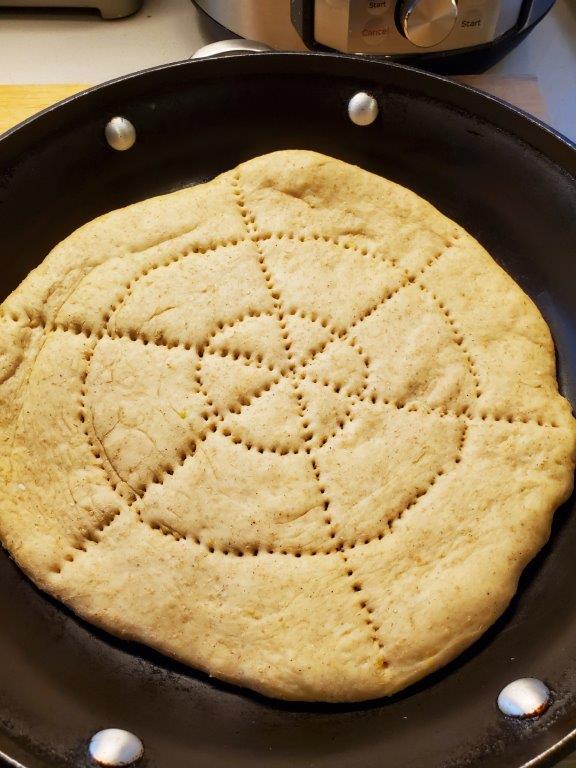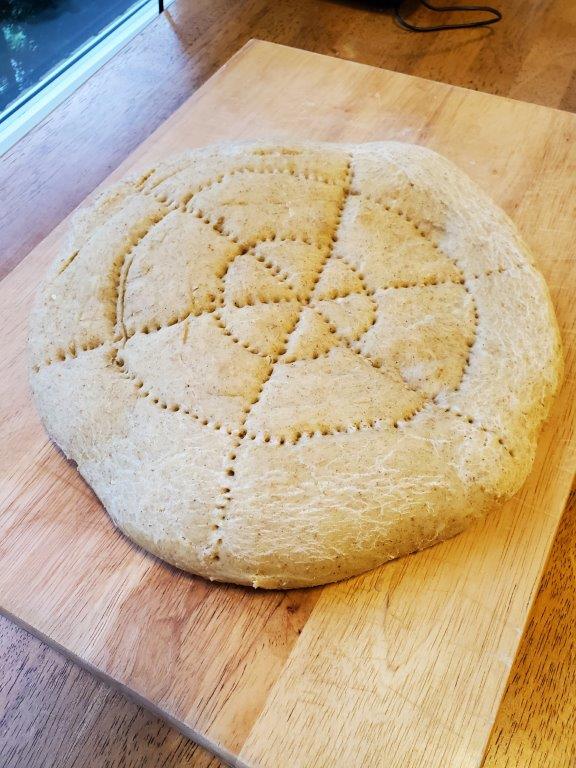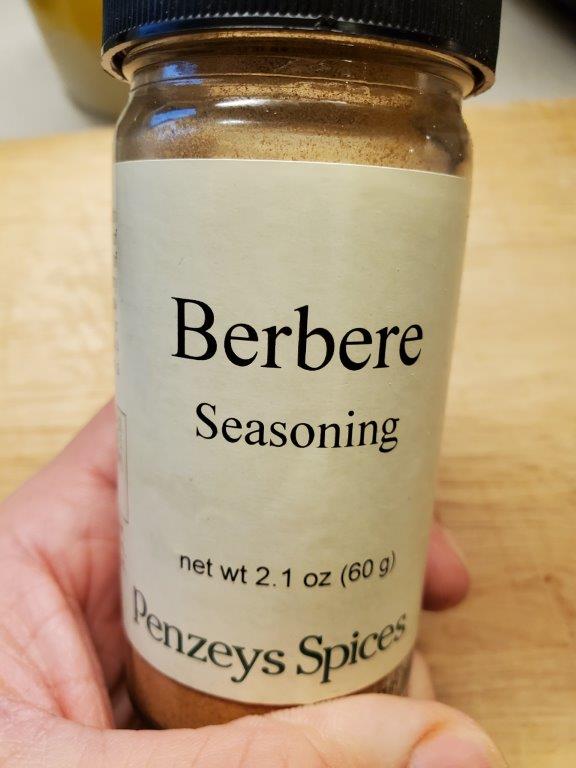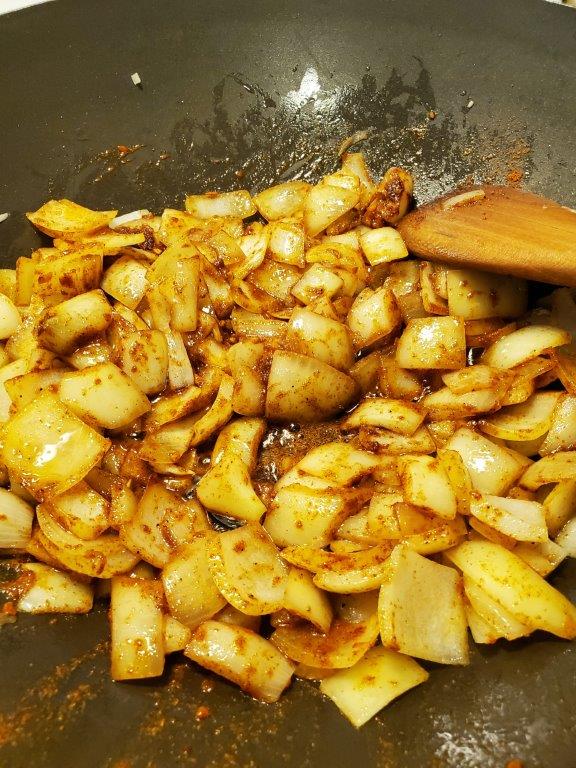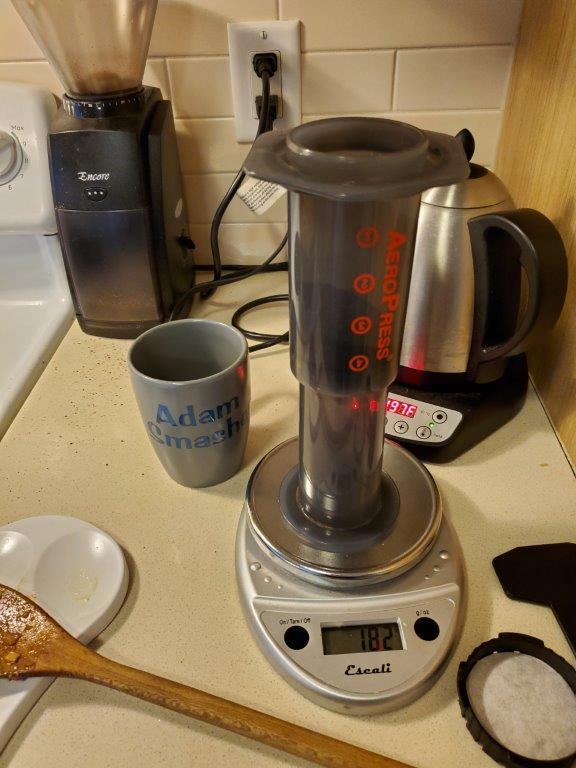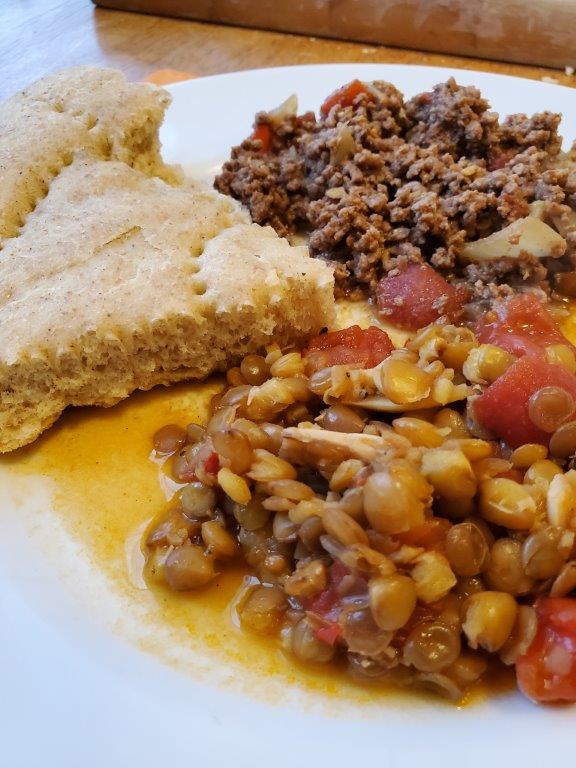This week, we cross Africa to the somewhat larger, but still not terribly large, country of Eritrea. We’ve had Ethiopian food many times, and so the challenge here was to determine what makes Eritrean food distinct from Ethiopian food.
And the answer seems to be… almost nothing, that we could find. Eritrea and Ethiopia were even the same country for a while, until Eritrea fought a war to break away and gain their independence. They’ve had the same president since independence in 1993, possibly because they haven’t troubled themselves with little annoyances like holding elections.
We’re going to make a meat stew called Tsebhi Sega and a lentil stew called Alitcha Birsen. However, you could call them by their Ethiopian names, Sega Wat and Misir Wat, and you wouldn’t have to change the recipes at all. We DID identify one recipe which DOES seem to be uniquely Eritrean – a type of pan bread called hembesha. We decided we had to make that, plus it let us put off screwing up injera again for another few weeks. (To be clear, Eritreans DO eat injera, and it would have been totally appropriate with the rest of the meal.)
Let’s start with this bread, shall we? The dough involves normal dough stuff – yeast, flour, butter, eggs. But it ALSO involves cardamom, fenugreek, coriander seed, and garlic. What’s not to like there? We’ve been binge watching “The Great British Bake Off” to pass the apocalypse, so I feel like I’ve had quite a bit of practice watching other people knead bread by hand correctly. It seemed to go OK. No pictures – it just looked like dough.
On the other hand, after the first rise, comes the shaping, and that IS a bit unique:
Apparently the traditional way to do this is with nails, and one blogger I consulted used a ravioli cutter. I just stabbed it a bunch of times with a fork. Another rise in the pan, and then the pan goes into the oven. You’re supposed to cover it, but we forgot that step. Since we’ve only done this once, we don’t know what effect that might have had, but the bread still puffed up nicely in the oven.
OK, on to our stews. The primary reason that there’s not much distance between Ethiopian and Eritrean food is this stuff:
This spice blend is fundamental to both countries’ cuisines. And as far as we can tell based on our internet research, there is no uniquely Ethiopian or Eritrean version – it’s the same blend both places.
Which is not to say that every Eritrean grandmother makes her blend the same – of course not. It’s just that if you surveyed all the Eritrean grandmothers, and all the Ethiopian grandmothers, there doesn’t seem to be anything that one group is doing systematically differently than the other one.
What’s IN Berbere, you ask? LOTS of stuff. Typical ingredients often include, according to Wikipedia, chili peppers, coriander, garlic, ginger, basil, korarima, rue, ajwain or radhuni, nigella, and fenugreek. Now, none of the online recipes we consulted for making the stuff included the more obscure ones on that list – korarima or rue. But that’s OK, because we already HAD a bottle from Penzeys, so we weren’t planning on making it from scratch anyway.
First up is the lentil stew. A common characteristics of the two recipes is that the ingredients are added to the pot slowly, and each batch is allowed to cook at their own pace before adding the next one. In this case, we start by frying some ginger:

When that’s all pretty and golden, you toss in just the lentils and let them fry a little bit before adding ginger, chili, and salt and pepper. Cover with boiling water, and that’s it for the lentils. (There ARE lentils in this picture, trust us.)
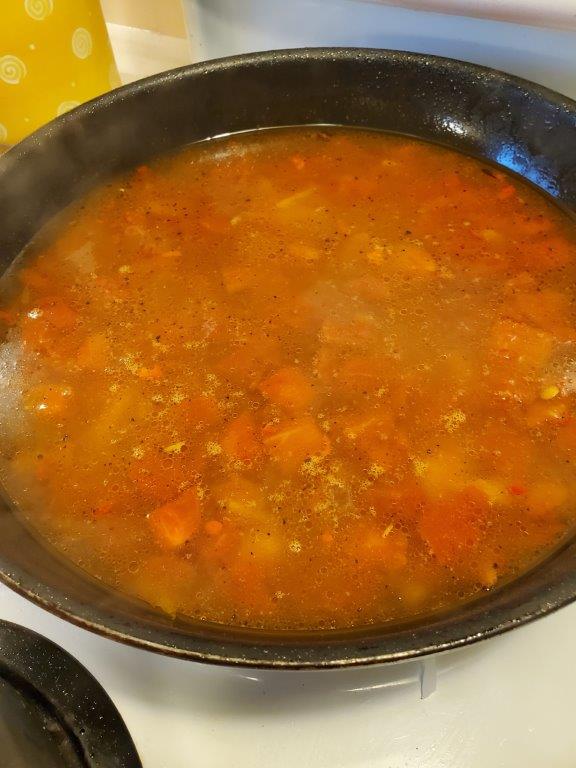
Those cook for an hour, so it’s time to move over to the beef stew. Instead of garlic, this one starts by frying onions, and I feel at this point I should mention that we just bought an electric knife sharpener. I HAD been sharpening our chef’s knife using a water stone, and I didn’t realize JUST how crap my sharpening skills were until I finally sharpened the thing properly.
My sharpening skills are CRAP, y’all. Unless you’re prepared to spend years mastering the craft with a water stone, get yourself a sharpening machine. The difference was miraculous. Cutting the aforementioned onions was absolutely effortless. And I didn’t even lacerate myself this time.
Ahem. There was a reason we ordered the sharpener, after all.
Moving on.
In addition to berbere, the other distinctive ingredient in this stew is tegelese tesmi, or seasoned clarified butter. Prior to starting these recipes, we cooked a whole pile of onions and garlic in some butter, and then I did a poor job of filtering out the solids. Still – even if it’s not done perfectly, it’s onion and garlic flavored butter – nothing not to like.
So into the onions went some butter and a LOT of berbere, and then the onions cooked down even more.
The long, long cook time on these onions really had an amazing effect – even though berbere is pretty firey, after 20 minutes of cooking, you could easily detect the sweet notes of the caramelization coming off the wok.
Wait – why are we using a wok here? Well, we only have two large frying pans, and at this point, one’s got the lentils and the other is in the oven with the bread. So wok it is.
Once the onions were ready, they were joined by some tomatoes, ginger, and garlic, and THAT was given some time to cook down as well. Finally, in went the meat. The site we got these recipes from is definitely very knowledgeable about Eritrean culture, but is somewhat unevenly translated. The recipe calls for “beef or lamb, shredded”, and the recipe title is “Spicy minced meat.” As such, we decided to go with ground beef rather than the chopped beef cubes, which we have seen more commonly at restaurants.
While the stews were finishing up, I made coffee. Coffee is an incredibly crucial part of Ethiopian and Eritrean culture. There are ceremonies. It is often prepared with the beans being not only ground but ROASTED for each individual meal.
THAT sure wasn’t going to happen.
Instead, I used the Kylo Ren of coffee apparatus – an Aeropress. At least the beans were from east Africa.
A few weeks ago, we showed off Leigh’s “PhDemon” glass from Flint Roller Derby, so here’s my “Adam Smasher” mug from Kalamazoo’s team.
After an hour, our kitchen smelled amazing and it was time to eat!
And the verdict? Stunningly good. We already knew we loved Ethiopian food, and this iteration did absolutely nothing to change our minds. (There was a reason we already had that jar of berbere, after all!) The lentils and beef stews were both spicy and delicious. You could taste the spices in the bread without their being overpowering, and the texture was soft and chewy, perfect for soaking up the juices. These are definitely recipes to come back to.
So, nice job, Eritrea! You make not like Ethiopia much, but your cuisine definitely matches everything we like about theirs.
Next time, we head back to Europe to visit Estonia!
Recipes:
This is an entire page of recipes from what seems to be an the web page of a Belgian(?) who goes to Eritrea a lot? I think? You can draw your own conclusions.

